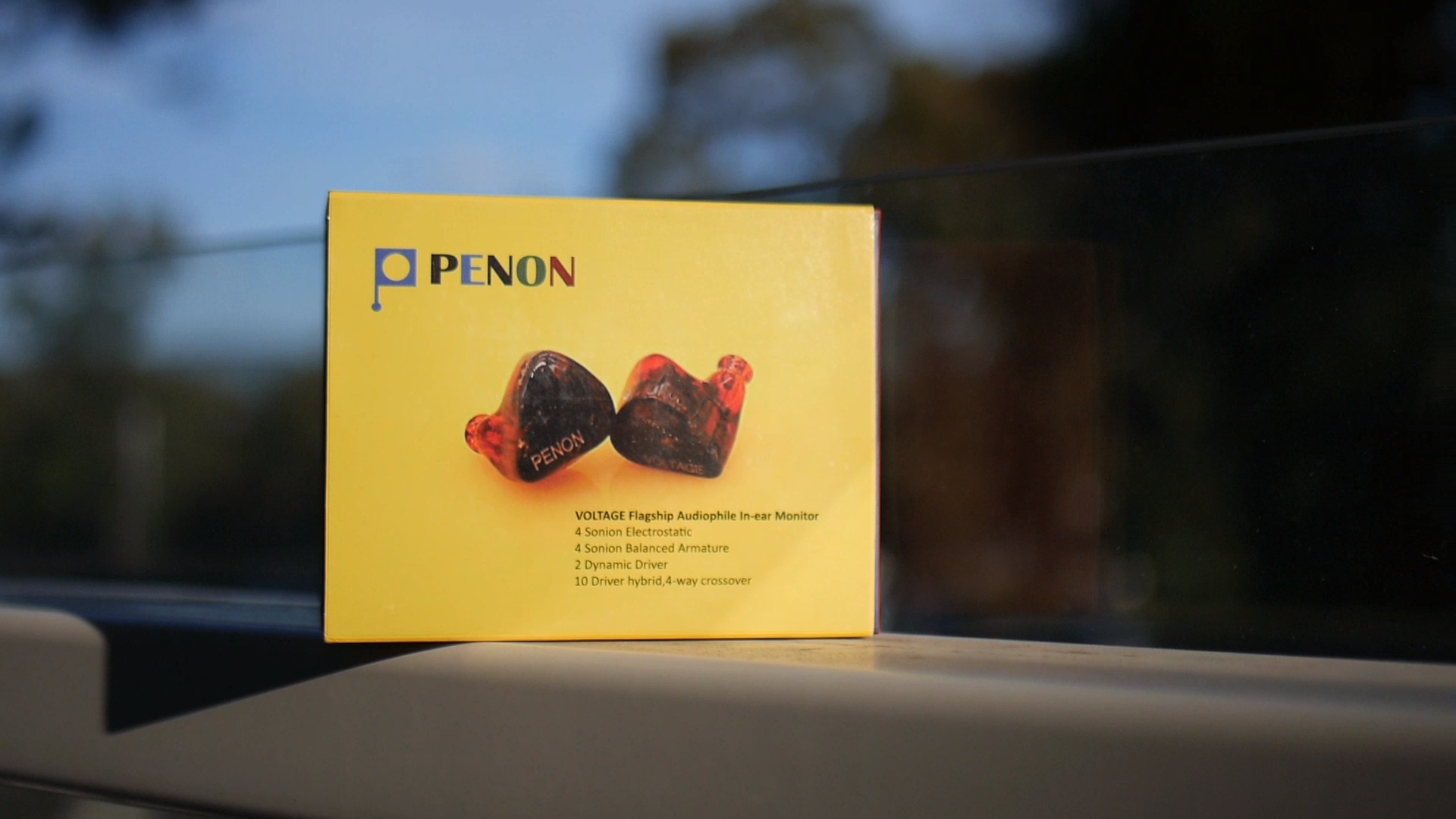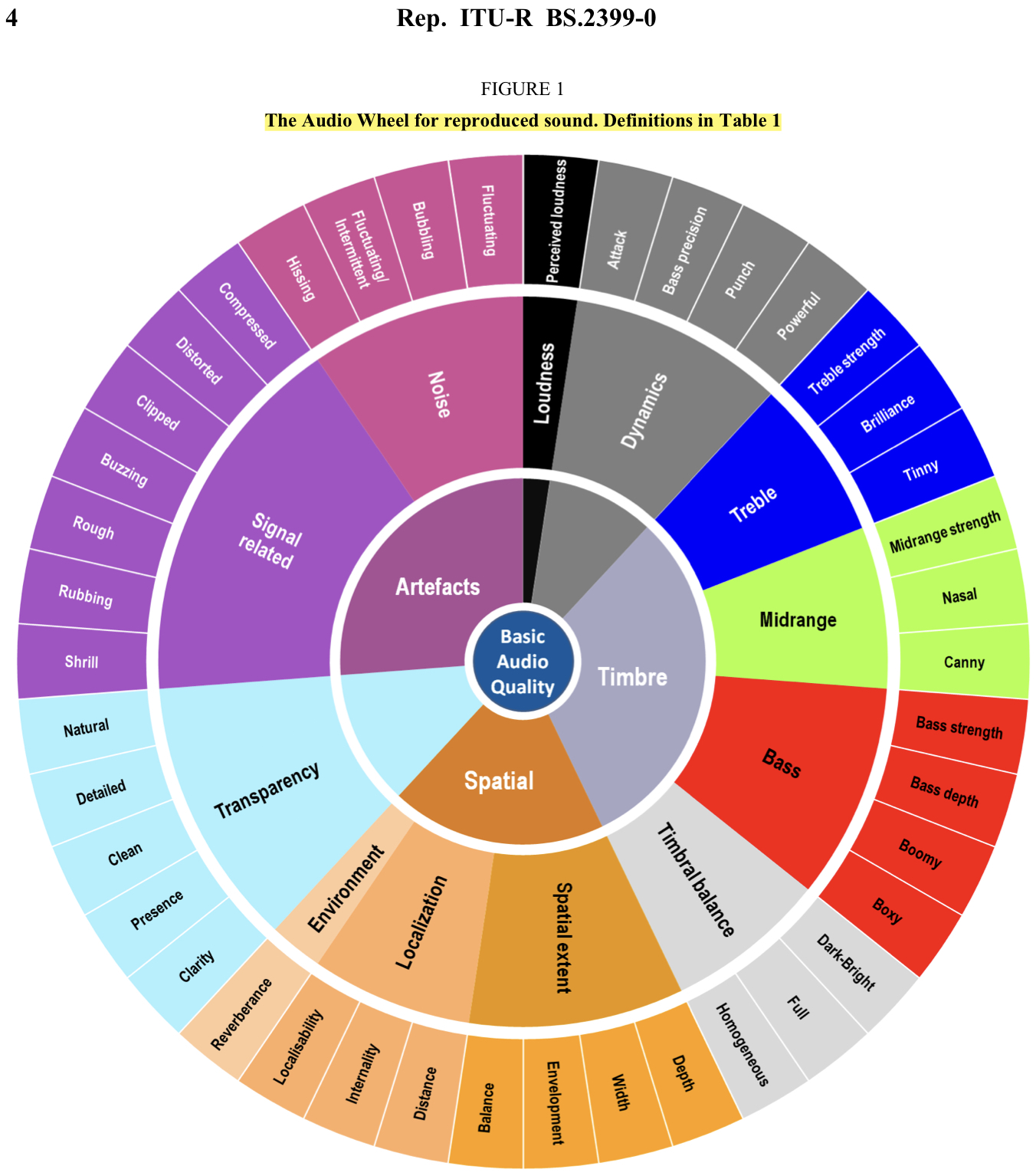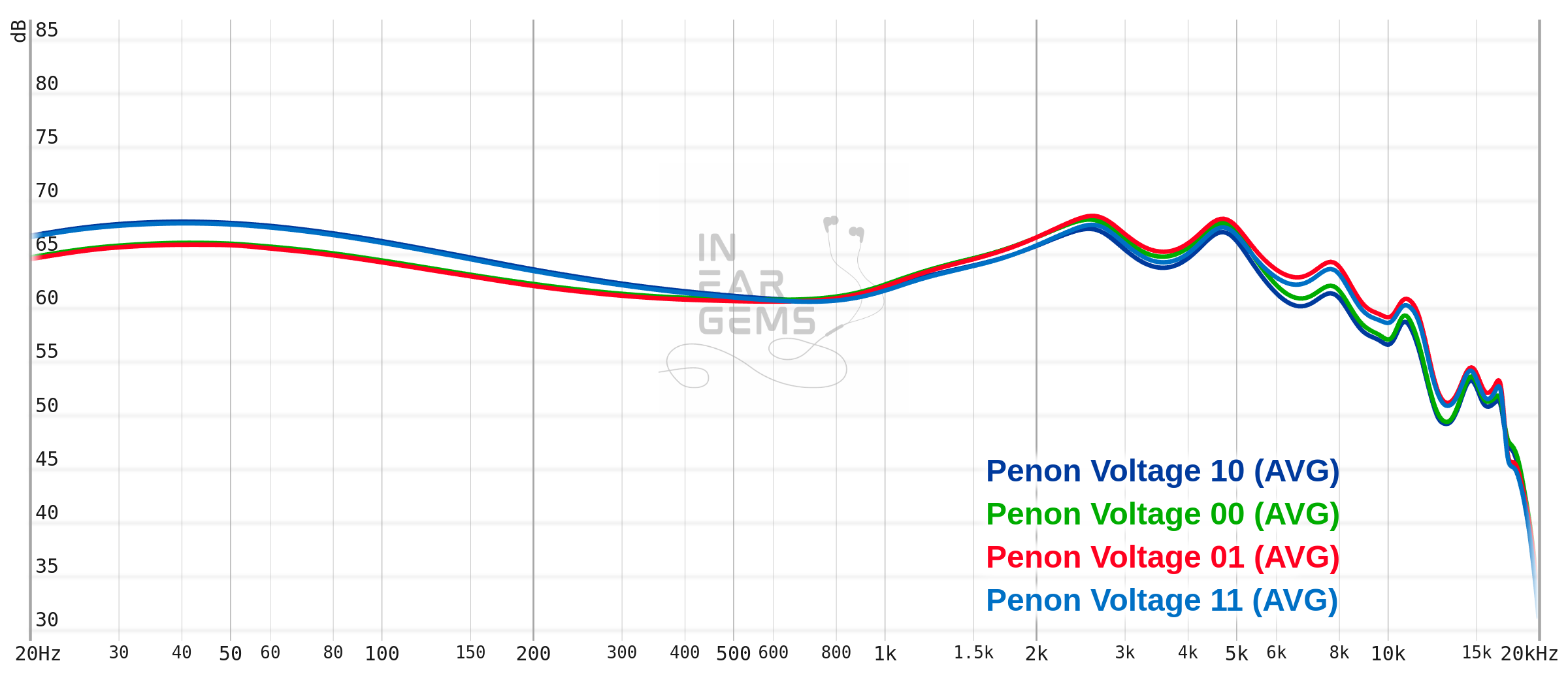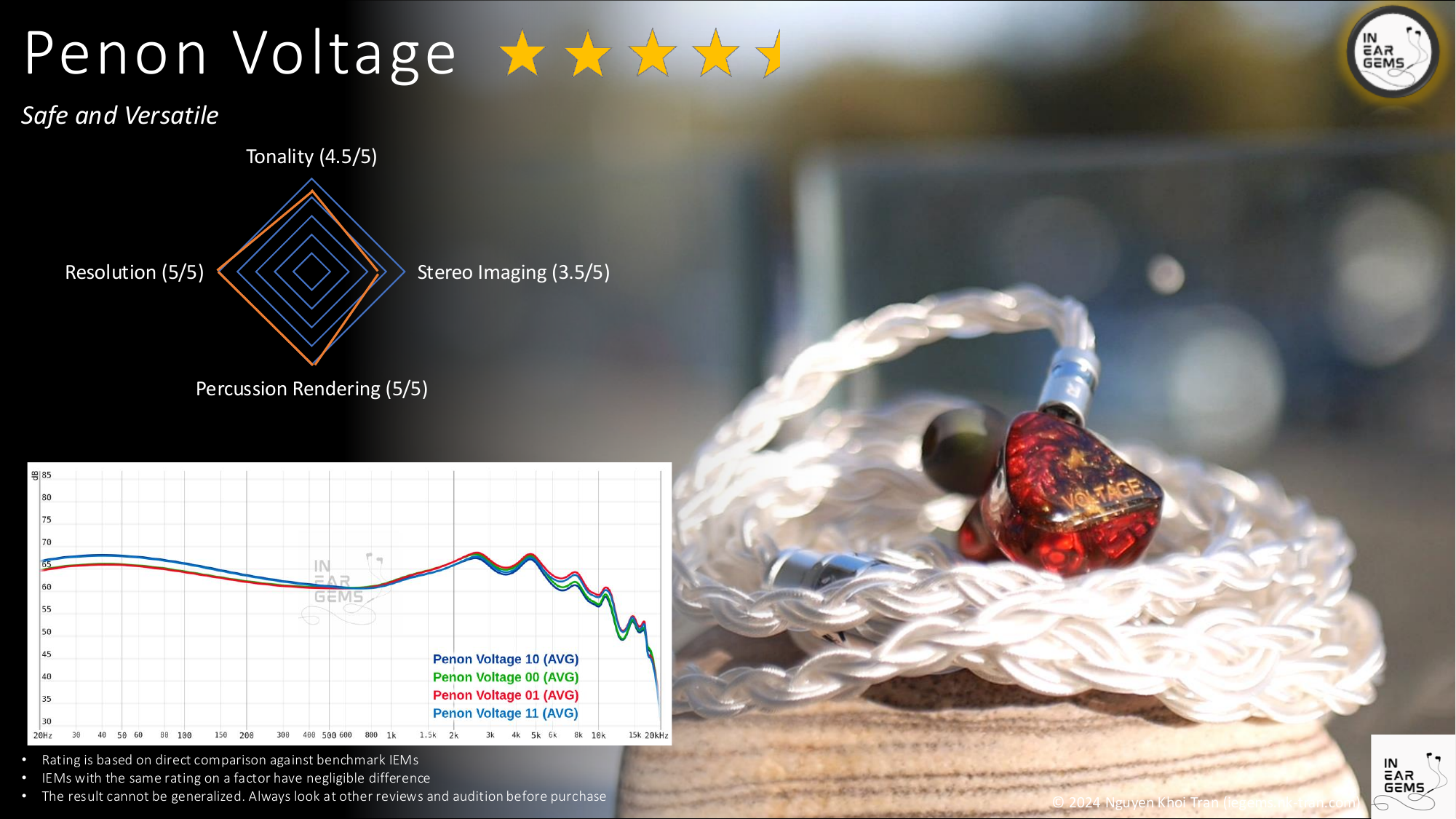Penon Voltage - Safe and Versatile
Today, we look at Voltage, a kilobuck entry from Penon.
Forewords
- What I look for in an IEM is immersion. I want to feel the orchestra around my head, track individual instruments, and hear all of their textures and details. I’m not picky about tonality, as long as it is not make the orchestra, violin, cellos, and pianos sound wrong.
- I rate IEMs within with a consistent scale from 1 (Poor) to 3 (Good) to 5 (Outstanding). An overall ranking of 3/5 or above is considered positive.
- Ranking list and measurement database are on my IEM review blog.
- The terminology for subjective impressions in this review is based on the Audio Wheel for reproduced sound defined in the technical report ITU-R BS.2399-0
- This review is possible thanks to the Australian tour arranged by my good friend @Tanalasta. Special thank you for making this tour possible!
- The unit retails for $1,199 at the time this review was published. Unaffiliated link: Penon web shop
General Information
Voltage is a tribrid IEM. It contains 10 drivers, split into four groups to handle four different parts of the incoming audio signal. The low frequencies are handled by 2 x 8mm dynamic drivers (DD) with hybrid diaphragm design (biofilm dome + flexible surround). The midrange is handled by 2 Sonion Balanced Armature (BA) drivers. The high frequencies are also handled by 2 Sonion BA drivers. The star of the show is the upper-treble, which is handled by 4 Electrostatic drivers from Sonion.
Voltage includes two tuning switches to allow user fine-tune the sound signature.
Non-sound Aspects


Packaging and accessories The box of Voltage is surprisingly small and simple for a kilobuck-class IEM. Luckily, the included accessories are quite generous and practical. Inside the box, you would find:
- A roomy carrying case
- A pouch to store individual earpieces to prevent them from scratching each other in the case
- An IEM cable that is soft and easy to handle + leather cable clasp
- 3 types of silicone ear tips + leather pouch to store all the tips
- Cleaning tool and utilities for flipping the tuning switches


Earpieces design Voltage shares the same shape and design as other Penon IEMs: hollow handmade acrylic shells, medium size, stubby nozzles.
Fit, comfort and isolation I find that the larger nozzles of Voltage do make my ears fatigued after an hour or so of continuous listening. Other than that, I have no fit or comfort problem. These IEMs are well vented, so I did not experience driver flex or pressure build up. Noise isolation is average.

Ear tips recommendation: Due the shape of the nozzles, I don’t have any particular ear tips recommendation, besides suggesting you to experiment with more types of ear tips than expected to fine a suitable balance between comfort and sound quality.
Sonic Performance
Test setup:
- Sources: DX300, L&P W4, Topping G5
- Cable: Stock cable with 4.4mm termination
- Ear tips: Pentaconn Coreir AL tips in medium size
The subjective impression is captured using the lexicon in the Sound Wheel below. I’ll clarify the terminology as I use them. If you want to see more details of the lexicon and related reference, please have a look at the technical report ITU-R BS.2399-0.

Timbre: It is helpful to think of an IEM as a filter that sits between the incoming audio signal and your ear drums. This filter makes some parts of the signal (frequencies) louder whilst other parts quieter. This effect can be measured objectively by the squiggly lines below, called Frequency Response (FR) graphs, which measure how loud an IEM is at different frequencies from 20Hz (bass) to 20kHz (upper treble). Ideally, an IEM should change the signal as least as possible (a.k.a., “flat tuning”) to avoid disturbing the balance between fundamental frequencies of instruments and their harmonics to ensure that they sound natural and life-like. Practically, IEM engineers can tune or “voice” an IEM to deviate carefully from the flat tuning to create interesting colouring and effects on the audio content. This voicing or tonal balance of an IEM can be denoted as its sound signature. Subjectivity is how your ears and brain interpret such sound signature and decide whether it is “enjoyable”

Figure shows the frequency response of Voltage against the Harman in-ear target. Measurements were done with an IEC-711-compliant coupler and might only be compared with other measurements from this same coupler. Above 8kHz, the measurement likely does not match the response at the ear drum. Visit my graph database for more comparisons.

How do you describe the overall sound signature of Voltage? Voltage has 4 different sound signatures thanks to the inclusion of two effective tuning switches. The left switch lifts the entire bass and midrange region below 1kHz by up to 3dB, which essentially double the amount of energy in this region and thus quite audible. The right switch lifts the treble region from around 5kHz by up to 3dB. You can engage both switches at the same time.
When the left switch is turned on (denoted as 1x configuration in this article), the tonal balance of Voltage becomes more bassy and midrange becomes thick, if not veiled. This tonal balance works well with sparse recordings rather than dense and complex recordings, which can sound rather congested.
When the right switch is on (denoted as x1 configuration in this article), the tonality and tonal balance of the Voltage remains the same, but the sense of definition and separation of elements in a recording as well as the details of these elements are elevated. The best way to describe the effect of this treble switch is like turning the fog lights on to reveal elements that were previously foggy. Fortunately, Voltage does not sound overly bright or piercing in this mode.
My favourite configuration, which I used for the rest of this review article, is 01. It strikes a right balance between warmth and correct tonality, whilst highlighting the details and resolution offered by the four EST tweeters.

How does Voltage balance different voices and instruments in a band? (Sample tracks: ABC feat. Sophia Black by Polyphia) The tonal balance of Voltage, at least in configuration 01, is surprisingly balanced. The singer is highlighted, but not at the expense of the rest of the band. Kick drum and toms sound powerful and prominent. Bass guitar is audible, though not overly highlighted. Cymbals and hats are audible and easily tracked. No part of the band feels recessed that makes me want to change the volume to hear more clearly.
How does Voltage balance different parts of a piano? (Sample tracks: Bach’s Goldberg Variations, recorded by Lang Lang) Voltage slightly emphasises the higher notes over the bass voice, though not overly so. I find the higher voice just a touch overpowering, masking the bass voice. If I’m more nitpicking, I would say the piano sounds just slightly veiled. Not significantly, but the middle notes of the piano do not come through as clearly as I wanted. I suspect the cut right at 3kHz contributes to this sensation.
How does the midrange of Voltage handle vocals? (Sample tracks: Dreamland Express by John Denver, Kiwi wa Boku ni Niteiru by See-Saw) Voices are where Voltage shine. John Denver sounds realistic, effortless, detailed, and simply pleasing. Chiaki Ishikawa, the lead vocal of See-Saw, also sounds beautiful. Voltage manages to make her voice clear, vibrant and emotive, without a overdoing the brightness to the point of shoutiness and harshness. Surprisingly, Voltage also does not smother her voice with a blanket of warmth either. The tuning for vocal is rather excellent here.
How does Voltage handle sibilant recordings? (Sample tracks: Shivers by Ed Sheeran) The theme of well-tuned vocal reproduction continues. Voltage does an excellent job at taming this harsh recording without smothering the brilliance in Ed Sheeran’s voice. Again, I’m surprised that Penon does not put a warm blanket on top of the voices like how I hear some of their previous IEMs. Well done.
How does Voltage reproduce strings and orchestra? (Sample tracks: Now We Are Free by 2CELLOS, Ciaccona from Bach’s Violin Partita No.2 in D Minor, performed by Kavakos, Synchro BOM-BA-YE by Tokyo Kosei Wind Orchestra) Does voltage handle cellos well? Rather good. The main cellos in Now We Are Free sound clear without lacking the low-end oomph, at least with the 01 configuration. With the 1x configuration, Voltage makes the cellos too boomy and unrefined. Voltage also does an excellent job with violin, reproducing a clean, clear, somewhat dry and textured tone, that is very close to how violin sounds in real life. The theme of tonal correctness carries over to orchestra and brass. I couldn’t detect any tonality problem in Synchro BOM-BA-YE, a track that usually reveals treble problems.

Percussion, Bass, and perceived dynamic: In this section, my focus is the not just the bass, but rather the sense of dynamic of an IEM. Can it convey the sense of beat and rhythm? Can it reproduce transients, the fast and large jump of loudness in the music? Simply put, is this IEM toe-tapping? Creating this energy requires all parts of the frequency spectrum working together: treble energy around 4-6kHz conveys snappy attacks of stick hitting percussive instruments at the beginning of a beat, bass energy around 150Hz conveys the punchy sensation of the beat itself, whilst the subbass energy below 60Hz creates the physical rumble sensation that convey power and atmosphere. Weak treble response dulls the attacks. Weak bass makes beats hollow. Too much bass makes bassline blurry and dulls the sense of rhythm. Thus, “dynamic IEM” is a balancing art.
How does Voltage convey “epic” bass lines? (Sample tracks: Heart of Courage (Live) by Two Steps From Hell, A Reckoning in Blood from The Ghost of Tsushima OST) Oh yeah, this IEM is toe-tapping in the 01 configuration, which is surprisingly given that it does not that much bass quantity. The first drum hit at 00:30 of Heart of Courage is a highlight of how Voltage does bass: refined attack, quite nuanced, without lacking the physical oomph of the beat. The theme continues with A Reckoning in Blood. Whilst the amount of bass is not high, the beats feel snappy and toe-tapping. Would I want more bass? Yes, I do, but not by turning on the bass switch, because the when I do, Voltage sounds “slow” and overly boomy, which actually reduces the sense of rhythm and dynamic.
How does Voltage handle a drum kit and bass guitar? (Sample tracks: Playing God by Polyphia) Quite nice! Every kick feels tight and speedy, with enough sense of physical impact. The bass guitar has clear note attack and great sense of texture. The patterns on cymbals and hats are also well produced. I particularly enjoy the drum section around 02:15. Very beat can be heard.
In conclusion, is Voltage … toe-tapping? Yes. A bit more bass quantity with the same refinement as the 01 configuration would be nice, but it’s okay as is.

Resolution: To me, “resolution” can be broken down into three components: (1) Sharpness, incisiveness, or “definition” of note attacks (see the figure below). (2) The separation of instruments and vocals, especially when they overlap on the soundstage. (3) The texture and details in the decay side of the notes. The first two give music clarity and make it easy to track individual elements of a mix. The last provides music details and nuances. Whilst IEMs can “force” clarity by boosting treble to unnatural level, it might still lack resolution as it cannot “peel apart” complex tracks with overlapping instruments

Can Voltage handle complex, overlapping recordings? (Sample tracks: ABC feat. Sophia Black by Polyphia) Yes, and surprisingly effortlessly. Now, we need a small clarification: it’s that the IEM is “effortless”, it is me, as the listener, feels “effortless” when trying to follow individual elements in a complex recording with Voltage. It should be emphasised that this level of resolution is not shown clearly after I turned the treble switch on and bass switch off. The opposite configuration (10) is rather disappointing.
Can Voltage handle recordings with congested lower frequencies? (Sample tracks: Now We Are Free performed by 2CELLOS) Yes, no problem. I did not detect any congestion when main cellos, cellos section of the orchestra, and the doublebasses play at the same time and occupy the same frequency range. Again, this performance is only with the 01 configuration.
How does Voltage convey micro details? (Sample tracks: Ciaccona from Bach’s Violin Partita No. 2 in D Minor, performed by Kavakos) The 4 EST tweeters in Voltage does a great job at pulling out micro details in both the violin and the reverberation. I’m particularly impressed by how detailed and nuanced Voltage convey the reverberation of the violin in the recording hall.
On the scale from fair (Moondrop Aria) to good (Moondrop Blessing 2) to great (CFA Andromeda 2020) to outstanding (AFUL Cantor), how resolving is Voltage? Voltage is outstandingly resolving (again, with bass switch down and treble switch up).

Stereo imaging and soundstage: Stereo imaging or “soundstage” is a psychoacoustic illusion that different recording elements appear at various locations inside and around your head. Your brain creates based on the cues in the recording, which are enhanced or diminished by your IEMs, your DAC, and your amplifier. In rare cases, with some specific songs, some IEMs can trick you into thinking that the sound comes from the environment (a.k.a., “holographic”)

How does Voltage position instruments in a complex, 3D-sounding recording? (Sample tracks: Original Sound Effect Track - Memory from Gundam Seed Destiny OST album) The soundstage of Voltage feels spacious, but with more width than depth. It means the stereo image of this track feels expanded to the side, even reaching outside the ears, but it does not convey a strong contrast between near and far sound elements. Therefore, it lacks a certain degree of immersion that I expected. On the plus side, the positioning of sound elements on the stage is quite precise.
How does Voltage convey a sense of space in spacious recordings? (Sample tracks: Shadow of Baar Dau) Even though the soundstage is still somewhat “2D” with more width than depth, Voltage still managed to make this recording sounds rather spacious. One of its advantage is the ability to contrast between the foreground elements and the distant background elements in the mix, by pushing the latter further into the, well, background.
How does Voltage handle sound positioning in FPS games? The soundstage is still wider and deep. However, thanks to the precise positioning, it is still rather easy to pinpoint the direction of gunshots and footsteps. The ability to gauge distance is not a strong suit of Voltage, but it is passable.
On the scale from good (Blessing 2) to great (CFA Andromeda 2020) to outstanding (AFUL Cantor), how good is the stereo imaging and soundstage of Voltage? I find Voltage’s soundstage and imaging to fall between Blessing 2 and Andromeda 2020. It sounds less 2D than Blessing 2, and its ability to position instruments on the soundstage is as precise, if not more than Andromeda 2020. However, it lacks the perceived depth to shape an immersive “3D” soundstage illusion.
Driveability
Specs:
- Impedance: 13 ohm
- Sensitivity: 106dB
How sensitive is Voltage? Does it get loud too easily or is it very difficult to drive? Voltage’s sensitivity is somewhat in the middle. It does not pick up hissing noise from amplifier nor get loud too quickly. At the same time, it is not hard to drive.
How does Voltage sound with a portable DAC/amp or a small music player? Voltage sounds surprisingly good with R3II, my primary setup for listening on the go. I don’t feel that I lose significant sound quality with this pairing.
How does Voltage “scale” with stronger amplifier? Adding Topping G5 as a pure amplifier between Voltage and a good DAC, such as L&P W4, does improve the sense of scale of Voltage’s representation noticeably. The soundstage feels more open, as if every element in the mix is more sharply defined and pushed further away from each other. From this perspective, I can say Voltage does “scale.”
Comparisons
Vs AFUL Cantor:
- Tonality: Cantor feels more even across the midrange whilst Voltage feels like it some edges and dips. The midrange of Voltage does sound slightly warmer.
- Bass and dynamic: Cantor has more subbass rumble, whilst Voltage has more perceived mid-bass thump. Depending on where the bass is in the mix, one or the other IEM would have more advantage. Personally, I find Cantor to feel more dynamic more often than Voltage, though the difference is slim.
- Resolution: Cantor has a slight upper hand when it comes to instrument separation in busy tracks. On the other hand, Voltage has an advantage when it comes to micro details and resolution of upper treble, which are particularly apparent in sparse recordings where I can focus on details.
- Soundstage and imaging: Cantor sounds more 3D, which makes it more immersive to me. Both IEMs are equally precise in terms of instrument positioning on the soundstage.
Conclusions
After years of holding the “mid-fi” IEM market by offering a unique cozy house sound and great value, Penon is advancing into the high-end IEM realm, with Voltage as one of the vanguards. And, it gets the job done. Voltage offers a slight twist on the classic Penon house sound to deliver a more neutral and, arguably, more correct tonality without removing the expected pleasing midrange. At the same time, the effective tuning switches allow you to get the classical thick sound back, should you prefer it over the neutral tuning. Voltage also does not disappoint on the technical performance front, taking full advantage of its quad EST tweeter array to deliver excellent detail retrieval, provided that you don’t turn on the bass switch, which in turn casts a veil across the presentation. The tonality, versatility, and technical performance makes Voltage a safe option for listerers taking the first plunge into the “kilobuck IEM” land.
What I like about this IEM:
- Midrange tonality, especially for vocal-centric music
- Detailed treble, without harshness
- The way dual DD woofer produces bass content
- The sense of rhythm
- Wide soundstage
- Versatility offered by the effective tuning switches
What could be improved:
- The soundstage is rather flat, lacking immersion
- This IEM could benefit from a focused sub-bass boost
Absolute Sonic Quality Rating: 4.5/5 - Great!
- Timbre and tonality: 4.5/5 - Great
- Bass and dynamic: 5/5 - Outstanding
- Resolution: 5/5 - Outstanding
- Soundstage and imaging: 3.5/5 - Good
Bias Score: 4/5 - I like this IEM

